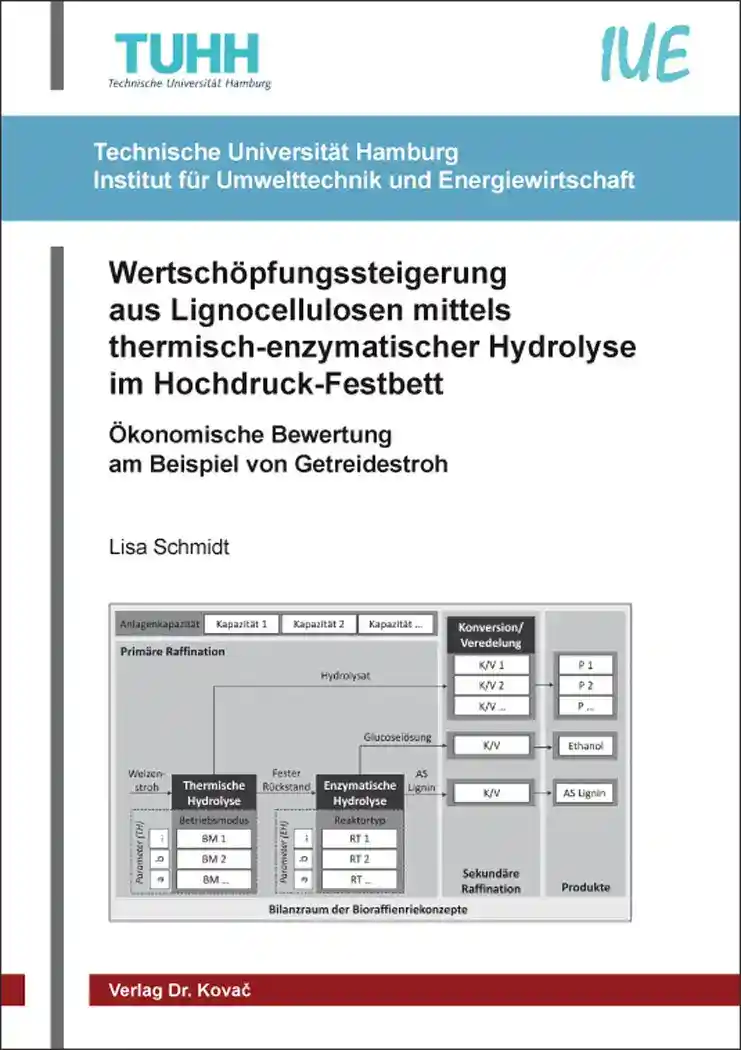Lisa SchmidtWertschöpfungssteigerung aus Lignocellulosen mittels thermisch-enzymatischer Hydrolyse im Hochdruck-Festbett
Ökonomische Bewertung am Beispiel von Getreidestroh
Schriftenreihe technische Forschungsergebnisse, volume 36
Hamburg 2019, 268 pages
ISBN 978-3-339-11124-1 (print)
ISBN 978-3-339-11125-8 (eBook)
About this book deutschenglish
Based on the intended to turn into a more bio-based society, the competition for the raw material biomass is steadily growing. Therefore, the development of new biorefinery concepts, which convert biomass as completely as possible into high-value products, is essential to meet this need in a sustainable manner. By thermal-enzymatic hydrolysis in a high-pressure fixed-bed reactor fractionation of straw without additional chemicals is possible. Especially for the lignin and the hemicellulose fraction, which are currently primarily used as fuel or animal feed, this results in properties that make these products interesting for high-value applications in the pharmaceutical, cosmetic and food industry. Based on the state of the art and own experimental investigations on hemicellulose isolation from the hydrolysate recovered after the fractionation, the economic viability is assessed in the context of integrated biorefineries. For lignin, it can be shown that production at production costs (451 €/ t Lignin) in the range of lignins from the paper industry and Organosolv lignins is possible. For hemicellulose, the production costs (3,011€/ t hemicellulose) are more in the range of pectin for which hemicellulose may possibly represent a substitute.
